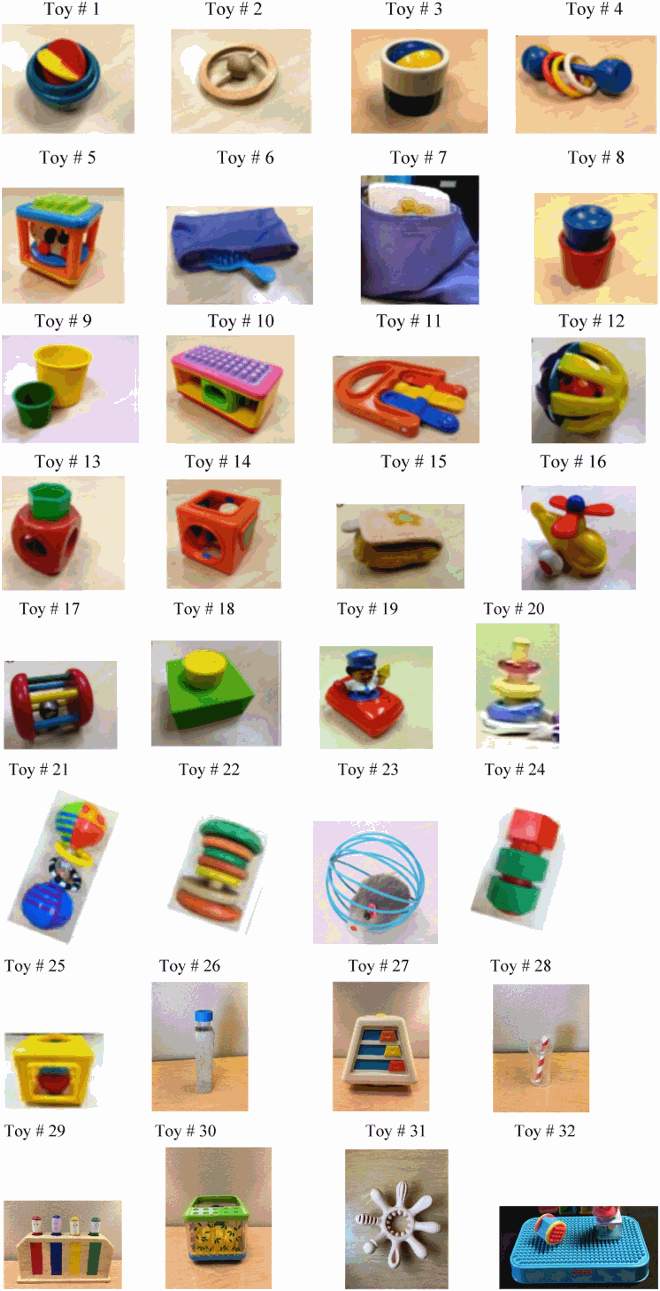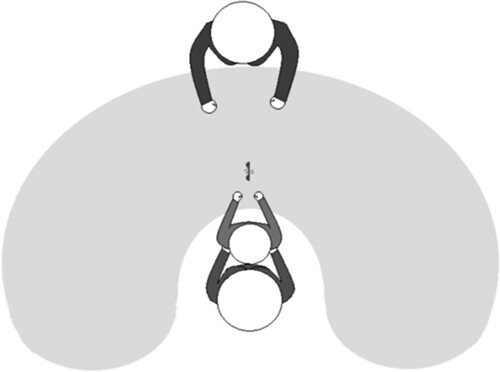 ?Mathematical formulae have been encoded as MathML and are displayed in this HTML version using MathJax in order to improve their display. Uncheck the box to turn MathJax off. This feature requires Javascript. Click on a formula to zoom.
?Mathematical formulae have been encoded as MathML and are displayed in this HTML version using MathJax in order to improve their display. Uncheck the box to turn MathJax off. This feature requires Javascript. Click on a formula to zoom.ABSTRACT
Role-differentiated bimanual manipulation (RDBM) is a complex behaviour requiring the complementary movement of two hands to achieve a common goal. We investigated the relation of RDBM speed (time to complete a successful RDBM) with a hand preference for acquiring objects (early right, late right, left, no preference), toy type (simple/difficult), age (9-14 months), and hand (right/left) used to perform the RDBM. Changes in RDBM speed across age were examined across different hand preference groups for RDBMs performed on simple toys using the right hand. The analysis revealed that early-right preference infants had a steeper slope than the no preference/left-preference infants. The same was true for right-preference infants (early- and late-) for RDBMs performed on difficult toys using the right hand. A mixed ANOVA revealed that there were decreases in RDBM times across age, therefore infants are faster at performing RDBMs over time, regardless of toy type, hand used, or hand preference. The results of the present study suggest that when exploring the development of hand preference, we should consider the influence of age, hand preference, and hand used.
The development of manual skills may be better understood by examining how consistent hand preference influences the development of manual skill performance. Previous research has established a relation between hand preference for acquisition (preference for acquiring or lifting an object; Michel, Babik, Sheu, & Campbell, Citation2014; Nelson et al., Citation2013) and hand preference for RDBM (preference for role-differentiated bimanual manipulations in which one hand stabilizes an object while the other manipulates the object). These manual skills differ in how they are performed as well as when they appear temporally in development. Acquisition preference appears earlier than RDBM, with acquisition preference appearing around five to six months of age (Campbell, Marcinowski, Babik, et al., Citation2015) and RDBM preference appearing around 18 months (Nelson et al., Citation2013).
An examination of the developmental change from acquisition hand preference to RDBM hand preference found that handedness developed differently across age from infancy to toddlerhood (Nelson et al., Citation2014). Some children exhibited a consistent hand preference during both infancy and toddlerhood, whereas others did not show a consistent preference until toddlerhood.
We addressed the relation between a hand preference for acquiring objects and the development of role-differentiated bimanual manipulations (RDBMs). RDBMs are actions in which two hands, each performing a different but complementary action, work together to accomplish a mutual goal (Babik & Michel, Citation2016). We address the question of whether infants’ acquisition hand preferences predict infants’ RDBM performance speed.
The establishment of a hand preference for acquisition (using only one hand to acquire or pick-up an object) during infancy was found to predict the hand preference for RDBM (using two hands in complementary ways to complete an action) in toddlers (Nelson et al., Citation2014). A significant proportion of the infants who had a right-hand preference for acquisition as infants maintained their right-hand preference for fine motor actions during RDBM as toddlers. This relation between hand preference for the earlier appearing skill of acquisition and the later appearing skill of RDBM led us to propose an examination of whether established hand preference for acquisition has an influence on RDBM completion speed. We examined the differences in speed to complete the active motion of RDBMs (as opposed to the stabilizing action).
Unimanual manipulations defined
A unimanual manipulation (UM) occurs when an individual is using one hand to complete an action on an object (Babik, Citation2014). Unimanual manipulations may be considered a developmental phenomenon which can be observed temporally between the manifestation of object acquisition and the bimanual manipulation of objects because unimanual actions may not require activation of both hemispheres as is likely for bimanual manipulations (Michel, Citation2021). The development of unimanual manipulation is likely the foundation for more complicated bimanual manipulations because UMs precede the emergence of bimanual manipulations (Babik, Citation2014; Nelson et al., Citation2013). An assessment of handedness during infancy (6-14 months old) and again during toddlerhood (18-24 months old) revealed that the number of successful RDBMs increased across time (Nelson et al., Citation2013). During the infant trials, children were encouraged to reach for and manipulate different toys which were chosen for their symmetrical design. During the toddler trials, each child was presented with toys that would elicit asymmetrical bimanual manipulations (RDBMs). During asymmetrical bimanual manipulations, one hand supports the object while the other hand engages in exploration of the object. In the infant trials, hand preference was defined as the hand that was used most frequently to acquire each toy. In the toddler trials, hand preference was defined as the hand that most frequently manipulated the object in a manner that successfully achieved a goal while the other hand supported the object. Across the months observed, the number of successful RDBMs increases, after unimanual manipulation skills had been established, suggesting that the emergence of bimanual manipulations occurs later in development.
Bimanual manipulations defined
Bimanual manipulations are actions in which two hands are working together to manipulate an object and likely involves activation of both hemispheres of the brain (Nelson et al., Citation2013). There are two forms of bimanual actions (Kimmerle et al., Citation1995). First, symmetrical bimanual actions (or non-differentiated bimanual manipulations), often referred to as mirror actions, are when both hands are doing the same movement simultaneously or successively (Babik, Citation2014). For example, a mirror action occurs when a child pushes the button of a toy using both index fingers simultaneously. Second, asymmetrical bimanual manipulations, or role-differentiated bimanual manipulations (RDBMs) occur when both hands are working at the same time to achieve a common goal, but the hands are performing different, but complementary, actions (Babik, Citation2014; Nelson et al., Citation2013). In an adult, when opening a bottle of soda, a RDBM occurs when one hand, most often the non-preferred hand, stabilizes the bottle while the other hand, most often the dominant hand, manipulates the top by twisting it to open the drink. This is a very simple action that is easily observable in adults, however among infants, this action is still developing and not as easily observable.
RDBM development
What factors have been demonstrated to have an influence on RDBM development and performance? Object type and characteristics of individual objects have been examined as factors which may influence RDBM performance. For example, the type of toy presented to an infant increases the probability of an RDBM action being performed on an object (Kimmerle et al., Citation1995; Kimmerle et al., Citation2010). Specifically, items that have two moveable parts are more likely to result in an infant performing an RDBM than when infants are presented with items that are of one piece. These authors reported that infants spend increasing amounts of time performing RDBMs on two-part objects from 7 to 13 months of age. Information on the amount of time that an infant spends on an RDBM before completing this action was not included in these studies.
There is information in the literature on the emergence of RDBMs considering details of the objects presented to the infants. In infants from 7 to 13 months were observed interacting with 10 objects that differed on whether they had movable parts, afforded graspability, and finger control (single finger or pincer actions) (Kimmerle et al., Citation1995). They observed that an infant must have the ability to acquire the toy, manipulate it, and the movable parts must be easily accessible and match the movement capabilities of a typically developing infant if RDBMs are to be elicited.
Whereas the previous studies have provided information about the kinds of toys that may elicit RDBMs, they did not describe whether RDBM performance is affected by object type, nor did they consider whether the RDBM speed is influenced by an established hand preference or whether RDBM completion time decreases (becomes faster) with age. The current project examined whether these factors could influence the time required to complete a RDBM action.
Are RDBM actions performed more quickly when using the hand preferred for acquiring objects? Because acquisition hand preference is associated with later differences in RDBM hand preferences, we hypothesized that differences in acquisition hand preference could lead to differences in RDBM performance. The current study used unimanual acquisition hand-preference as a variable to predict RDBM speed. Latent classes of acquisition hand preference were established by Michel et al. (Citation2014) and consist of four identified hand preferences (early right, late right, left, no preference). Since infants have already been identified as belonging to one of these four latent classes, it was possible to compare their speed for completing RDBMs. RDBM speed is the amount of time it takes to complete an RDBM; the higher the time, the slower the RDBM speed.
This study addressed four questions. First, is there a relation between age and RDBM speed? It was predicted that the time to complete an RDBM would decrease with age. It also was predicted that RDBM speed at nine months would be significantly slower from all other months based on the pilot study (Cortina et al., Citation2018). Second, is there a difference in RDBM speed among infants according to their acquisition hand preference? It was predicted that there would be a difference between no-preference infants and right-handed infants, but not between no-preference infants and left-handed infants. Third, do different toy types (simple v difficult) affect RDBM speed? It was predicted that RDBMs for simple toys would be faster than for difficult toys (Babik & Michel, Citation2016). Fourth, is there an interaction among hand preference, toy-type, and age for RDBM speed? If early right-handed infants get more practice with RDBM because they develop the ability sooner (Nelson et al., Citation2013), then right-handed infants are predicted to have the fastest RDBM completion times for both simple and difficult objects, as compared to other handedness groups, even late-right infants. Left preference infants are predicted to have faster RDBM speed than no-preference infants.
Methods
Participants
The participants of this study were infants who were recruited for a larger study (383 participants) conducted by the University of North Carolina at Greensboro. Participants for this study were recruited using birth records which were obtained from a courthouse in central North Carolina. All families were contacted with a letter which outlined a general description of the study and contact information. Those who contacted the research coordinator were then screened for participation requirements. Infants were eligible to participate in this study if they were healthy, full-term, with uncomplicated births. The current study consisted of 46 infants, selected based on the number of RDBM objects that were presented to the infants. The larger study was a longitudinal study spanning several years of data collection. Across time, the protocol changed, with the number of objects presented changing according to other tasks that were added or deleted. Infants for this study were selected from the larger sample with the goal of forming the largest sample size possible. These infants were selected by finding the highest number of presentations of the same RDBM objects presented to maximize the number of trials that could be coded (Campbell, Marcinowski, Latta, et al., Citation2015). During the period from 6 to 14 months, acquisition hand preference was assessed monthly. A procedure for assessing hand preference during a grasping task, which has been previously used (Michel et al., Citation2014) was employed. This task involves a research assistant presenting 32 objects to an infant while seated at a table. Objects were presented either one at a time or in matching pairs at shoulder width on the flat surface and were presented in the same order for each infant. Each toy at each time point (monthly from 6–14 months) was coded for every child. In sum, each child was observed nine times and 32 trials were observed at each of these trials. Less than 10% of all trials were unable to be coded because of video error or the infant’s lack of engagement with the object. There were no differences in incomplete trials across hand preference groups.
Statistical analyses
The infants included in this study were selected according to their hand preference classification as determined by the acquisition handedness procedure which was performed from 6–14 months of age. Fifteen infants were classified as having an early right-hand preference, nine infants had a late right-hand preference, 11 infants had a left-hand preference, and 11 infants had no hand preference for acquisition. The four handedness groups and age at each session were compared for speed to complete RDBMs (independent variable 1 and 2).
Materials
The current study used archived video data from a larger study. The procedure in the archived videos took place in a university lab room that was equipped with a table and two chairs (one for the researcher and one for the parent and infant). There were several different toys used in the procedure. The current study only included 32 toys which previous studies have shown elicit the target behaviours (role-differentiated bimanual manipulation, RDBM; Kimmerle, et al. Citation2010; Nelson et al., Citation2013; see Appendix 1). Two video cameras; one providing a top view and the other a left side view (both images linked using a Videonics mixer) were used to record each session. For the current study, the videos were coded using The Observer XT software package, which allows for time-controlled, frame-by-frame investigations.
Procedure
The infants came in with their parents for six monthly sessions between the ages of 9 months to 14 months. At each session, researchers conducted the procedure developed by previous studies, which is depicted in (Nelson et al., Citation2013). The parent sat at one long side of the table with the infant on their lap. The researcher sat on the other side of the table. The researcher presented the infant with 32 different toys and demonstrated to the infant what a successful RDBM looks like with the right hand and the left hand. The infant was allowed to explore and manipulate the objects for about 60–90 s. Each session lasted about 45 min.
Coding
Infant videos from ages 9–14 months were coded using trained, reliable behavioural coders. Twenty percent of videos were re-coded for interrater and intrarater reliabilities. To remedy disagreements in coding, the primary researcher met with the other coder to discuss the discrepancies until they came to an agreement.
The videos of each session were coded for RDBM speed (criterion variable) and toy type (predictor variable 3). In the current study, RDBM speed refers to the time to completion of a successful RDBMs, thus the start and stop times were recorded for each of the 32 trials per session. A successful RDBM occurred when one hand stabilized the body of a toy while the other hand manipulated the toy in a particular manner. For example, with toy number 18 (see Appendix A) a successful RDBM would occur when the infant stabilizes the toy by holding the green part steady while their other hand removes the yellow part form the green part completely. While coding successful RDBMs, there was a potential for two start and two stop times. The first start time was marked at the instance the infant reached for and acquired an object. The first stop time was marked at the completion of a first successful RDBM. If there was a second successful RDBM, then the second start time would have been the stop time recorded for the first successful RDBM for that toy. The second stop time was marked at the completion of the second successful RDBM. Toys were categorized based on the type of action they elicit (simple or difficult) as described in previous research (Kimmerle et al., Citation1995; Babik & Michel, Citation2016). Toys were categorized as simple if they elicited poking, stroking, or sliding. Toys were categorized as difficult when they elicited pushing, pulling, or removing. Coders recorded the toy number for later identification of simple versus difficult toys for analysis. The interrater reliability of agreement for identifying RDBMs was 90% or above was achieved for every coder.
Results
Question 1. Is there a change in RDBM speed across time?
Infants had a mean RDBM time of 7.34 s over all (SD = 6.40). The fastest time to complete a RDBM occurred at 13 months (M = 6.80 s, SD = 2.18). A mixed ANOVA was performed to address whether RDBM speed changed across time. This analysis revealed an overall increase in speed from 9 to 14 months, F(5, 210) = 10.94, p < .001, = .207 (). Pairwise comparisons of age with a Bonferroni adjustment, revealed that there are significant differences between 9 months and months 11–14 but not between 9 and 10 months. There was also a significant difference between month 10 and month 13. shows the mean difference between months and the significance levels. Within-subjects contrasts revealed there was a significant quadratic (F[1, 42] = 9.49, p = .004,
= .18) trend for age (). The differences observed in the month-to-month averages support the hypothesis that infants will increase their RDBM speed across time.
Figure 2. Differences in RDBM speed across different ages. Note. Quadratic change (dashed line) across age.
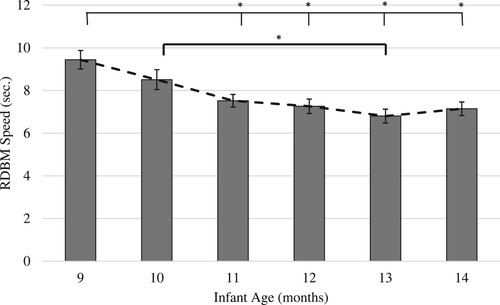
Table 1. Significant mean differences in RDBM performance across different age comparisons.
Question 2. Is there a difference in RDBM speed among infants based on acquisition hand preference?
A 4-way (age x toy x hand use x hand preference) mixed measures ANOVA was conducted to examine RDBM speed and hand preference. The main effects of hand preference revealed that there were no significant differences in RDBM speed between hand preference groups, F(3, 42) = 0.96, p = .42, = .06. This is the opposite of what was predicted in the second hypothesis. The speed of RDBM performance was not significantly faster for any one acquisition hand preference group. The average time to complete a RDBM for no preference infants was 7.12 s (SD = 1.63), making the no preference group the fastest, but this did not reach significance. For the early right infants, the average time to complete a RDBM was 8.19 s (SD = 1.63), making early right infants the slowest, but, again, this is also not a significant result. The average time for late right infants was 7.88 s (SD = 1.63). Finally, left infants had an average time of 7.93 (SD = 1.63). These results do not support the hypothesis that there would be differences among hand preferences.
Question 3. Do different toy types (simple v difficult) affect RDBM speed?
The 4-way (age x toy x hand use x hand preference) mixed measures ANOVA also addressed this question. There were no significant differences in RDBM speed between different toy type groups, F(1, 42) = 0.12, p = .75, = .003. For simple toys, the average speed with which RDBMs were performed was 7.82 s (SD = 1.72), while for difficult toys, the average speed with which RDBMs were performed was 7.743 s (SD = 1.93), however, these differences were not significant. This analysis suggests that the main effect of toy type does not affect RDBM speed.
Question 4. Is there is an interaction among hand preference, toy-type, and age for RDBM speed?
Longitudinal multilevel modeling, using the Hierarchical Linear Modeling 7 software, was performed to explore developmental trajectories of the speed with which simple and difficult role differentiated bimanual manipulations are performed separately for each hand, according to hand preferences for acquisition (early right, late right, late left, and no preference). The hand-use preference variable was coded as three dummy variables, “Early Right”, “Late Right”, and “Left”, with no preference being the reference group. It was determined in the analysis that there were no significant differences between the Left and the no-preference group. Therefore, a reduced model was formed, in which the no preference and the Left groups were combined.
The first HLM model predicted simple, right hand RDBM actions. shows the fixed and random effects for simple RDBM actions performed with the right hand. On average, RDBM speed increased linearly (β12 = −0.629, p < 0.05) for the Early Right-hand infants (see Fixed Effects in ). In other words, infants with an early right preference increased in the speed with which they performed right-handed RDBMs across time, as compared to the no preference and late left group, however, there was no significant difference between early right and late right (). The variance components for the intercept and linear slope were also significant (see Random Effects in ). Random effects are the variance of the intercept and slopes across groups and indicate that there is significant difference of the within-group variance for each hand preference group.
Figure 3. Change in RDBM speed across time between different hand preference groups for RDBMs performed on simple toys using the right hand.
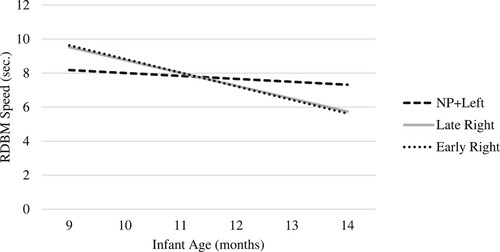
Table 2. Estimated fixed and random effects for simple, right-hand, RDBM speed according to hand preference for acquiring objects.
For RDBMs performed on difficult toys with the right hand, early-right and late-right handed infants both had significantly steeper linear slopes than the no preference and late-left handed groups, (, ). shows the fixed and random effects for difficult RDBM actions performed with the right hand. On average, RDBM speed increased linearly (β11 = −0.650, p < 0.05) for the late right-hand infants (see Fixed Effects in ). In other words, infants with a late right-hand preference increased in the speed with which they performed right-handed RDBMs across time, as compared to the no preference and left group, however, there was no significant difference from the early right group. The early right infants also show a significant linear increase in right-handed RDBM speed (β12 = −0.525, p < 0.05) as compared to the no preference and left groups. The data also revealed a significant difference in intercept for the early right group (β02 = 2.417, p < 0.05). This means that the early right group were initially performing right-handed RDBMs much slower than the no preference and left group, but not slower than the late right group. The variance components for the intercept and linear slope were also significant (see Random Effects in ).
Figure 4. Change in RDBM speed across time between different hand preference groups for RDBMs performed on difficult toys using the right hand.
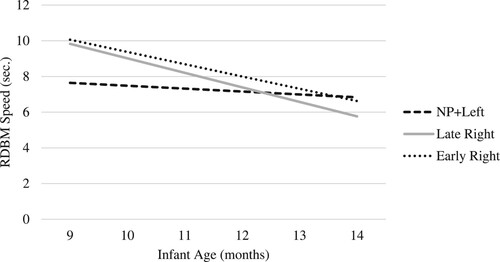
Table 3. Estimated fixed and random effects for difficult, right-hand, RDBM speed according to hand preference for acquiring objects.
For RDBMs performed on simple toys using the left hand, the early-right and late-right handed infants demonstrated a quadratic slope which was significantly different than no preference and left-handed infants (early right, β22 = 0.484, p < 0.01; late right, β21 = 0.484, p < 0.05; , ). These results indicate that the early and late right-hand groups change their left-handed RDBMs in a quadratic manner that was different from the no preference and left groups. The model also indicates that the late right group had an intercept that was significantly slower than the no preference and left preference groups, but not from the early right group (β01 = 3.422, p < 0.05). This significant difference in intercepts indicated that the late right infants began performing simple, left hand RDBMs much slower than the no preference and left groups at 9 months of age. In other words, initially, the no preference and the left groups were faster at performing simple, left hand RDBMs than the late right infants. However, the quadratic slopes indicated that the right preference groups increased in their speed, passing the no preference and left groups at 10 months, but ending at about the same speed at 14 months. For RDBMs performed on difficult toys with the left hand, no significant effects were demonstrated.
Figure 5. Quadratic change in RDBM speed across time between different hand preference groups for RDBMs performed on simple toys using the left hand.
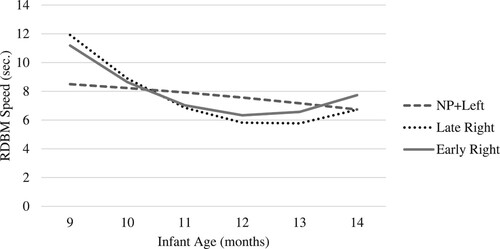
Table 4. Estimated fixed and random effects for simple, left-hand, RDBM speed according to hand preference for acquiring objects.
These HLM results lead us to question whether infants within each hand preference group perform RDBMs significantly faster with their right or left hand. For instance, are the early right infants performing difficult RDBMs with their right hand faster than they are with their left hand? To further explore the findings of the HLM analysis, a 4-way (age x toy x hand use x hand preference) mixed measures ANOVA was conducted. There were no significant differences in RDBM performance between different hands used to perform an RDBM, F(3, 42) = 0.17, p = .69, = .004.
shows the means and standard deviations of RDBM speed for different toy types, hand used to complete RDBMs, age, and hand preference. The mixed ANOVA also provided support for the results found in the HLM analysis. There was a significant interaction between age and hand preference (F[15, 210] = 1.99, p = .02, = .13). Within-subject contrasts revealed there was also a significant quadratic trend in the age by hand preference interaction, F[3, 42] = 4.07, p = .01,
= .22 (). There were no other significant interaction effects; however, within-subject contrasts demonstrate a significant quadratic trend for the toy type by age interaction, F[1, 42] = 6.44, p = .02,
= .13 ().
Figure 6. Differences in change in RDBM speed across time between different hand preferences demonstrate a quadratic trend.
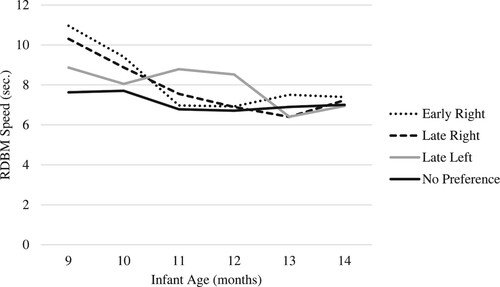
Figure 7. Differences in change in RDBM speed across time between different toy types demonstrate a quadratic trend.
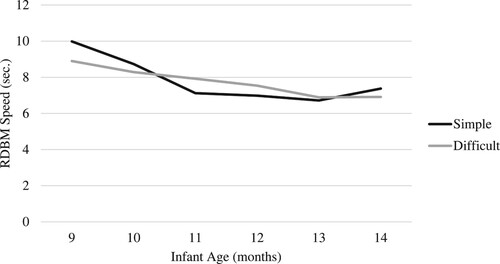
Table 5. Means and standard deviations of RDBM speed for different toy types, hand used to complete the rdbm, age, and hand preference.
provides statistics for the non-significant interaction effects. Overall, hypothesis 4 predicted a hand preference-toy type interaction. This was not supported by the analysis. The quadratic trends observed in the main effect of age, the interaction effect of age and hand preference, and in the interaction effect of toy type and age generally supported the significant difference in the quadratic slope observed across time among different hand preferences in the HLM analysis under the simple-left hand use conditions ().
Table 6. Interaction effects of hand used to perform RDBMS, toy type, age, and hand preference.
Discussion
The purpose of this study was to explore whether the development of infant role-differentiated bimanual manipulation (RDBM) performance improved with age, was affected by different toy types, and whether a hand preference for acquiring objects influenced the infant’s performance of RDBMs. RDBM speed, or time to complete an RDBM, is an aspect that has not been previously explored in the literature, thus this study was to expand current RDBM knowledge.
The first hypothesis that RDBM speed would increase across time was supported by the HLM analysis as well as the mixed ANOVA. RDBM times decrease across age for simple and difficult toys when using the right hand. RDBM completion times decrease (get faster) at 9 months as compared to all other months except 10 months. Thus, RDBM speed increases as the infants get older, regardless of toy type, hand used, or hand preference. Contrasts also revealed quadratic trends for RDBM speed. As infants get older, they become faster at performing RDBM actions. Age is certainly not an explanatory variable in this study. Instead, time represents an infant’s experiences with building manual skills. The more experiences that an infant has with objects, the more manual skills they can build. This has been demonstrated through observations of infants’ who have been given “sticky” mittens. These mittens are covered with strips of Velcro which enable the pre-grasping infants to acquire objects which are also covered in Velcro. Infants who are outfitted with these mittens acquire more skills in object manipulation, demonstrating that experience, as opposed to age, is an important factor in manual skills (Needham et al., Citation2002). Experience, rather than age, is also an important factor in the development of unimanual skills. Infants who show strong hand preferences early as a result of acquisition skills demonstrate a hand preference for unimanual manipulation earlier than those infants who have not acquired enough experience to build acquisition hand preference (Campbell et al., 2015).
The results that toy type did not influence the rate of RDBM speed can be contrasted with results from Sacrey et al. (Citation2013) which demonstrated that infants grasp food items with the right hand as early as 12 months, but right hand grasping for objects used in a construction task do not develop until 48 months. Had we incorporated a wider array of objects for differing tasks into the current protocol, it may be that speed to complete the tasks would vary according to object.
The second hypothesis that there would be a difference between no preference infants and right-preference infants was supported by the multilevel analysis conducted on the HLM software. For RDBMs performed on simple toys using the right hand, early-right preference infants had a steeper slope than the no preference/left-preference infants. Similarly, for right-preference infants (early- and late-) was steeper than for no preference/left-handed infants when RDBMs were performed with difficult toys using the right hand. The first hypothesis was supported by the finding that early-right and late-right preference infants demonstrated a higher quadratic slope than no preference/late-left preference infants for RDBM performance on simple toys using the left hand (). These findings suggest that right-preference infants improved their RDBM performance across time at a faster rate than the no preference/left-preference infants when using their right hand or left hand.
In reviewing our outcomes, it appears that the performance between right-preference and no preference/left-preference infants will demonstrate a bigger and bigger difference as the infants get older. This finding might be explained by the finding that right-preference infants get more practice with RDBM because they develop the ability sooner (Nelson et al., Citation2013) giving right-preference infants more time to develop manual skills using the right hand.
Interestingly, another trend observed suggests something different for RDBMs performed using the left hand. It appears that RDBM speed for simple toys using the left-hand decreases for right-preference infants as they approach 13 and 14 months of age, while the no- /left-preference infants appear to present a continued improvement in RDBM speed. This could also be explained by the assumption that as infants get older, their tendency toward their preferred hand gets stronger (Nelson et al., Citation2013). Therefore, whereas right-preference infants may show greater improvement in RDBM performance with both their right and left hands, there will be a point where right-preference infants will become less skilled than no preference and left-preference infants in using the left hand for RDBMs. Further study is needed to confirm the assumptions of , , and .
The third hypothesis predicted that there would be a difference in RDBM speed between simple and difficult toys. This prediction was not supported, however one trend of toy type by age showed that infants increase in their speed for both simple and difficult toys across time, but again, as they approach 14 months, they slow. An increase in the number of both simple and difficult RDBMs is supported by the literature (Babik & Michel, Citation2016). Others (Babik & Michel, Citation2016) discussed that simple RDBMs will be observed earlier in development. These authors suggest that simple RDBM actions are the result of accidental actions in which RDBMs occur as the result of the affordance of the object. For example, a stroking action may result in spinning a lever which happens more easily than pushing a button with a single digit. While the number of simple and difficult actions may change across time, our results did not find a difference in speed to complete simple and difficult RDBMs. This result may be due to skills which develop across time. In other words, the simple actions require as much time to perform as the difficult actions because “simple” RDBMs are as challenging to perform at earlier ages as “difficult” skills are to perform later. As the skills develop, the demands of the task also increase, which means that the time to complete these tasks remains constant.
The fourth hypothesis predicted that early-right preference infants would have the fastest completion times for RDBM followed by the late-right preference, late-left preference, and no preference, in that order. Looking at the results from the first hypothesis, the fourth hypothesis was somewhat supported by the HLM analysis. The HLM results indicated that right-handed infants demonstrated a faster rate of improvement in RDBM speed. The ANOVA analysis however did not support a hand preference by toy interaction which demonstrates there were no differences between hand preferences in RDBM performance within simple or difficult toys.
Overall, we suggest that these results support the cascade theory of development, which proposes that new behaviours emerge as a result of developmental contingencies (Michel, Citation2002). In this study, acquisition hand preferences, which were observed during the 6–14-month time precluded the emergent skill of RDBM. These RDBM skills were performed more quickly when the preferred hand for acquisition was used. Thus, the cascade theory development of development is supported through observation of these manual skills: acquisition hand preference cascades into skills for performing RDBMs quickly.
Limitations
These results may not be generalizable to the greater population in which a wider range of acquisition hand preference can be observed on a continuum. The small sample sizes may have also affected the power. Because of the small sample size in each of the acquisition hand preference groups, this study would benefit from additional work conducted after adding infants to each group to observe whether the results remain the same. Would increasing the sample size increase the variability of RDBM completion times? Additionally, this study does not observe infants past 14 months. Hand preference for RDBM becomes consistent from 18 to 24 months, and three groups emerge during this time: left with a moderate amount of right hand use, right with a moderate amount of left hand use, and right with a mild amount of hand use (Nelson et al., Citation2017). These RDBM hand preferences during the toddler months could influence the current results. Would speed for RDBM actions be influenced by skills which develop from the 14-month to 18-month period?
Future directions
We report faster RDBM performance as infants get older. However, we are not suggesting that age is an explanatory variable in this study. Instead, time represents the number of experiences that an infant has with building manual skills. Future studies may test whether experience or age have a stronger role in the development of RDBM skills by introducing these skills earlier and in greater frequency than average. If experience is important to the development of RDBM skills, early and frequent introduction of these skills should result in RDBM performance that is faster than those who do not experience early, frequent RDBM demonstrations. Similar to Needham et al.’s (Citation2002) demonstration that experience with sticky mittens enhanced the manual exploration of objects during infancy, experience with RDBM may enhance an infant’s ability to manipulate objects with two hands.
Conclusion
The results of the present study suggest that when exploring the development of RDBMs, we should consider the influence of age as well as the interactive influence of age and hand preference on RDBM performance. We should also consider the difference in RDBM performance based on the hand used to perform the RDBMs. Without hand use for performing RDBMs in the current model, there were few notable results. A study by Babik and Michel (Citation2016) suggests that it is important to compare action types (simple versus difficult) because it allows for a deeper understanding of RDBM development. However, the current study did not find such differences which could be due to differences in definitions of simple and difficult action types. RDBM speed is a factor that should be considered when examining the development of RDBM actions.
Disclosure statement
No potential conflict of interest was reported by the author(s).
Data availability statement
The data that support the findings of this study are available from the corresponding author, [J.M.C], upon reasonable request.
References
- Babik, I. (2014). Development of handedness for role-differentiated bimanual manipulation of objects in relation to the development of hand-use preferences for acquisition during infancy [Dissertation].
- Babik, I., & Michel, G. F. (2016). Development of role-differentiated bimanual manipulation in infancy: Part 1. The emergence of the skill. Developmental Psychobiology, 58(2), 243–256.
- Campbell, J. M., Marcinowski, E. C., Babik, I., & Michel, G. F. (2015). The influence of a hand preference for acquiring objects on the development of a hand preference for unimanual manipulation from 6 to 14 months. Infant Behavior and Development, 39, 107–117. https://doi.org/10.1016/j.infbeh.2015.02.013
- Campbell, J. M., Marcinowski, E. C., Latta, J., & Michel, G. F. (2015). Different assessment tasks produce different estimates of handedness stability during the eight to 14 month age period. Infant Behavior and Development, 39, 67–80. https://doi.org/10.1016/j.infbeh.2015.02.003
- Cortina, S. M., Flores, R., Ghem, K., Campbell, J. M., & Michel, G. F. (2018). Role-differentiated bimanual manipulation differences in speed amongst different handedness groups. In Program 51st Annual Meeting of the International Society for Developmental Psychobiology, 41.
- Kimmerle, M., Ferre, C. L., Kotwica, K. A., & Michel, G. F. (2010). Development of role-differentiated bimanual manipulation during the infant's first year. Developmental Psychobiology: The Journal of the International Society for Developmental Psychobiology, 52(2), 168–180. https://doi.org/10.1002/dev.20428
- Kimmerle, M., Mick, L. A., & Michel, G. F. (1995). Bimanual role-differentiated toy play during infancy. Infant Behavior and Development, 18(3), 299–307. https://doi.org/10.1016/0163-6383(95)90018-7
- Michel, G. F. (2002). Development of infant handedness. In D. J. Lewkowicz & R. Lickliter (Eds.), Conceptions of development (pp. 165–186). Psychology Press.
- Michel, G. F. (2021). Handedness development: A model for investigating the development of hemispheric specialization and interhemispheric coordination. Symmetry, 13(6), 992.
- Michel, G. F., Babik, I., Sheu, C. F., & Campbell, J. M. (2014). Latent classes in the developmental trajectories of infant handedness. Developmental Psychology, 50(2), 349–359. https://doi.org/10.1037/a0033312
- Needham, A., Barrett, T., & Peterman, K. (2002). A pick-me-up for infants’ exploratory skills: Early simulated experiences reaching for objects using ‘sticky mittens’ enhances young infants’ object exploration skills. Infant Behavior and Development, 25(3), 279–295. https://doi.org/10.1016/S0163-6383(02)00097-8
- Nelson, E. L., Campbell, J. M., & Michel, G. F. (2013). Unimanual to bimanual: Tracking the development of Handedness from 6 to 24 months. Infant Behavior and Development, 36(2), 181–188. https://doi.org/10.1016/j.infbeh.2013.01.009
- Nelson, E. L., Campbell, J. M., & Michel, G. F. (2014). Early handedness in infancy predicts language ability in toddlers. Developmental Psychology, 50(3), 809–814. https://doi.org/10.1037/a0033803
- Nelson, E. L., Gonzalez, S. L., Coxe, S., Campbell, J. M., Marcinowski, E. C., & Michel, G. F. (2017). Toddler hand preference trajectories predict 3-year language outcome. Developmental Psychobiology, 59(7), 876–887. https://doi.org/10.1002/dev.21560
- Sacrey, L. A. R., Arnold, B., Whishaw, I. Q., & Gonzalez, C. L. (2013). Precocious hand use preference in reach-to-eat behavior versus manual construction in 1- to 5-year-old children. Developmental Psychobiology, 55(8), 902–911. https://doi.org/10.1002/dev.21083
Appendix A:
The 32 objects used in the RDBM task
